PSP AACE International Planning & Scheduling Professional (PSP) Exam Free Practice Exam Questions (2025 Updated)
Prepare effectively for your AACE International PSP Planning & Scheduling Professional (PSP) Exam certification with our extensive collection of free, high-quality practice questions. Each question is designed to mirror the actual exam format and objectives, complete with comprehensive answers and detailed explanations. Our materials are regularly updated for 2025, ensuring you have the most current resources to build confidence and succeed on your first attempt.
Which of the following is NOT true?
When a fragnet of activities represents a known schedule risk, which activity will most likely change the overall outcome?
The congested site only has room for 3 cranes to operate concurrently. Only 1.75 cubic yard ICY] or1.34 cubic meter [CM] concrete buckets are available. Each crane can perform up to 35 lifts per day. Assuming a total of 30 lifts per crane pet day. what is the maximum volume of concrete that could be placed using 3 small tower cranes over a 5-day period?
Project delays are best analyzed
Theoretically construct a summary activity for activities 2001 through 2004. Using the "normal" schedule, what is the cost of the hammock?
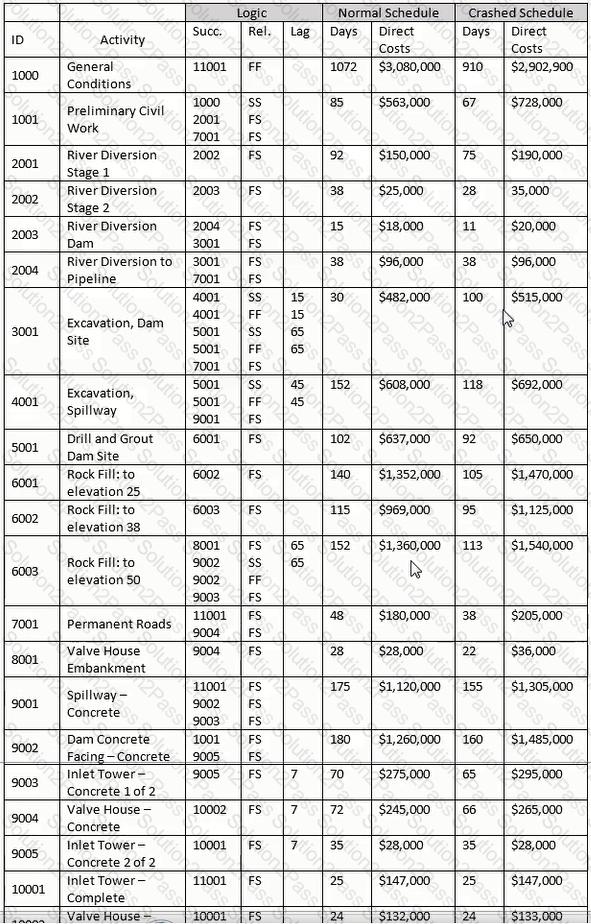
Using a 1.75 cubic yard [1.34 cubic meter] bucket, how many lifts does it take to pour each 2.000-cubic foot [56.64 cubic meter] column?
If the administrative constraints for developing the precedence diagram, as provided in the contract documents, indicate that no individual construction activities shall have a longer duration of two months, how many activities in the "normal" schedule would be affected?
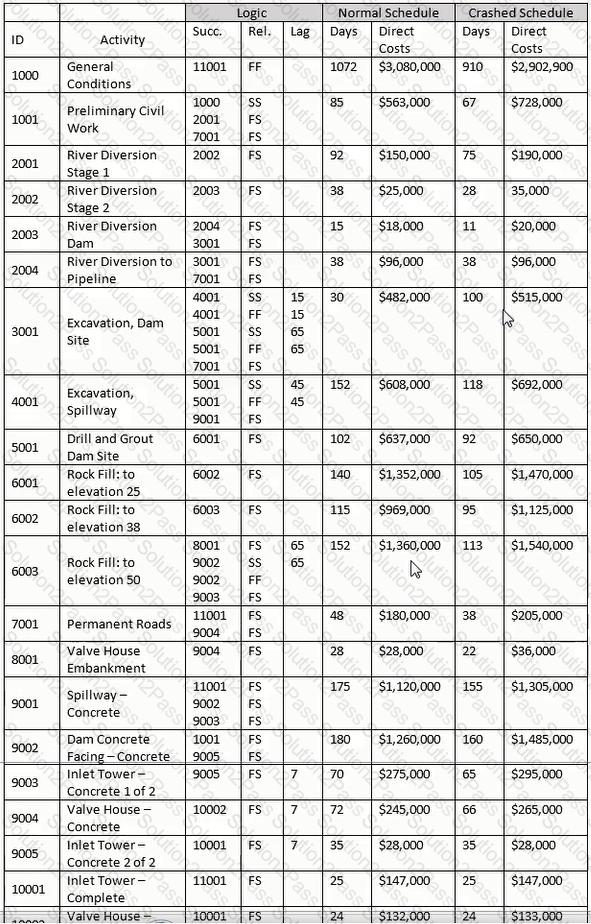
What defines a KPI?
The expected remaining cost needed to complete an activity, group of activities or the project is the____________.
The BEST reason to use multiple calendars is to:
There is only enough room for a maximum of 4 cranes to be placed on-site. Assuming that a single crane can perform 35 lifts per day and that a column pour requires 60 lifts, what is the minimum number of tower cranes that should be used for the above described column pours?
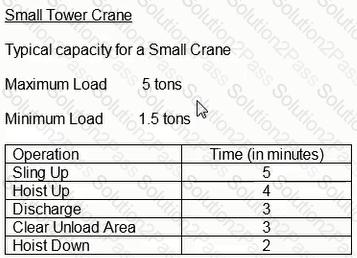
Identify the minimum project duration.
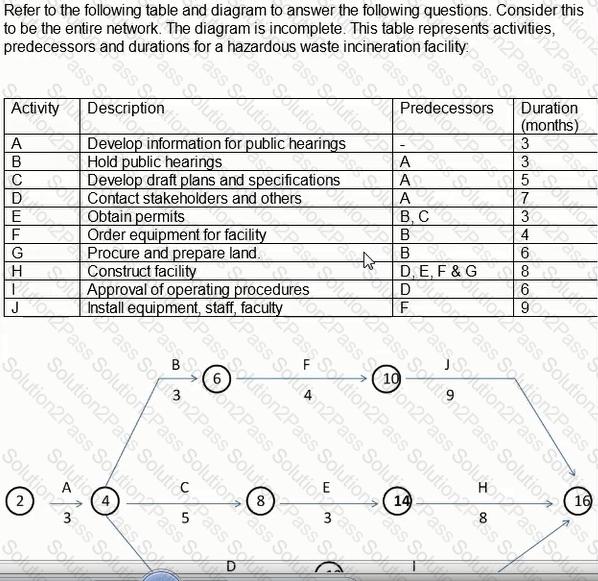
Assuming conventional finish-to-start relationships, to calculate a schedule retaining the existing logic means that
When reconstructing a CPM schedule electronically from a hardcopy, which of the following is NOT required to determine the critical path?
Project Life Cycle Phases do NOT include the following item:
Baseline schedule can be submitted only__________.
What are Phases based on and derived from?
Before the work begins, the contractor considers crashing the schedule. How much would the crashed general conditions have to be reduced to break even with the normal cost budget?

Midway through the project you received an executed change order for this project, adding thirty-three days to the contract for weather delays. In its simplest form, how would your next project update display the changed condition?
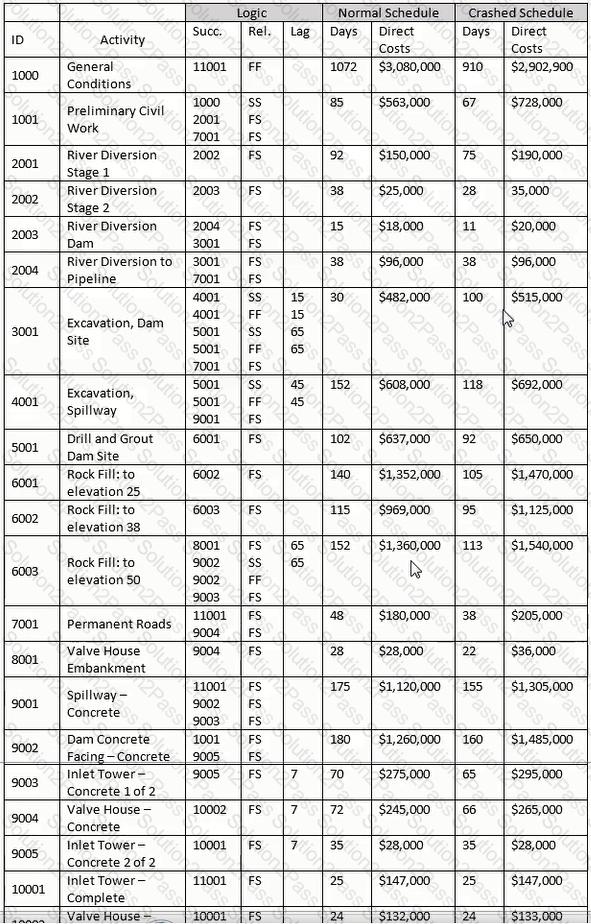
: 20
Constraints control events or activities that __________________.
